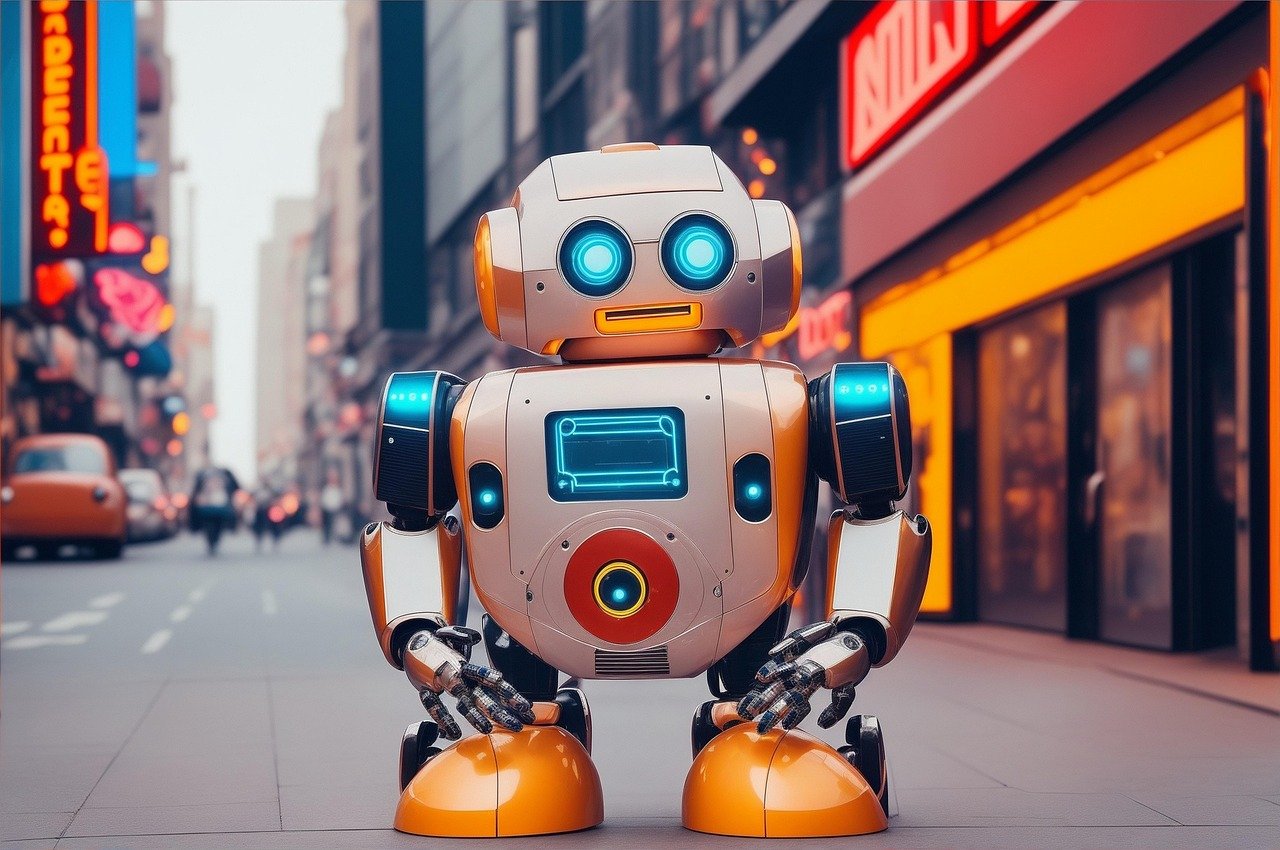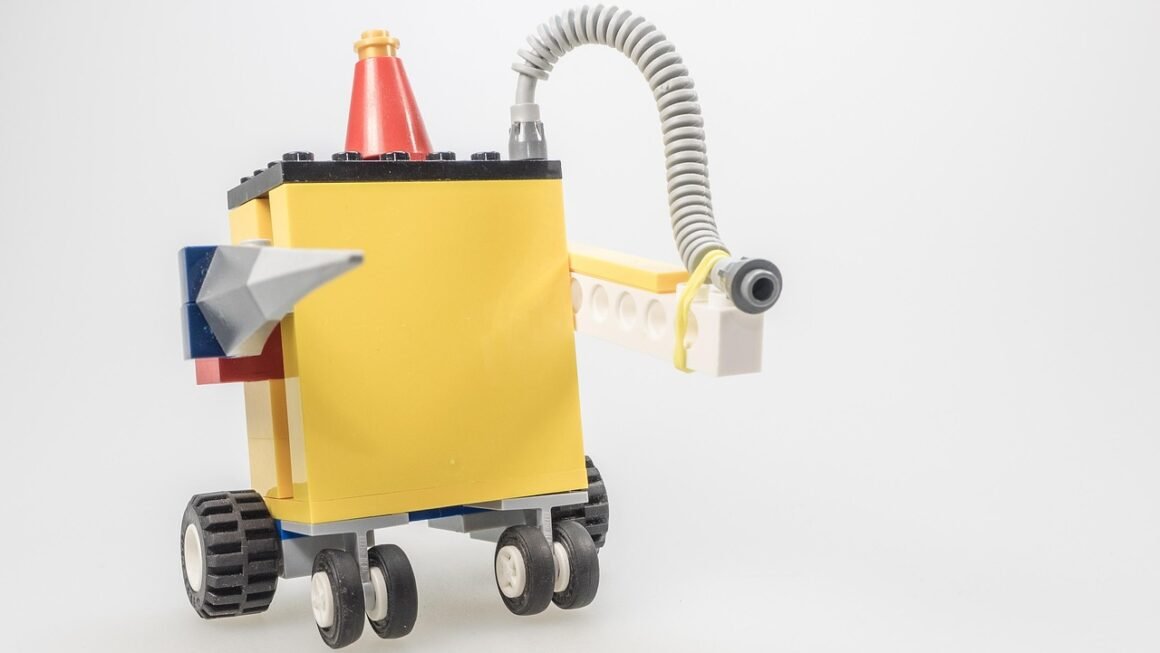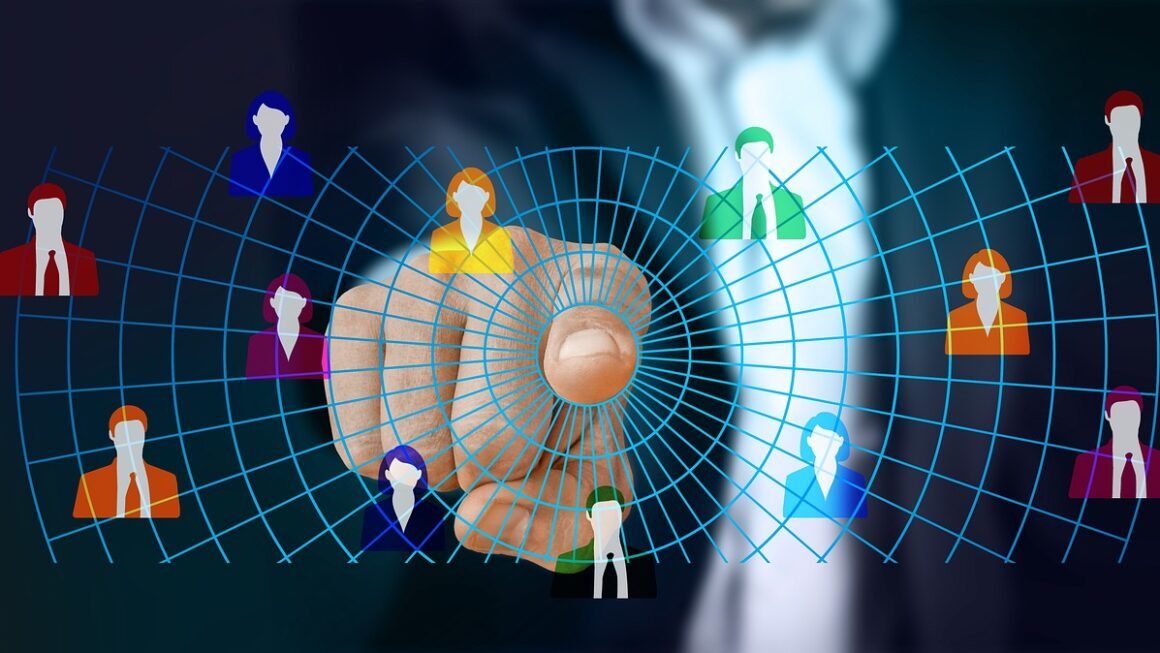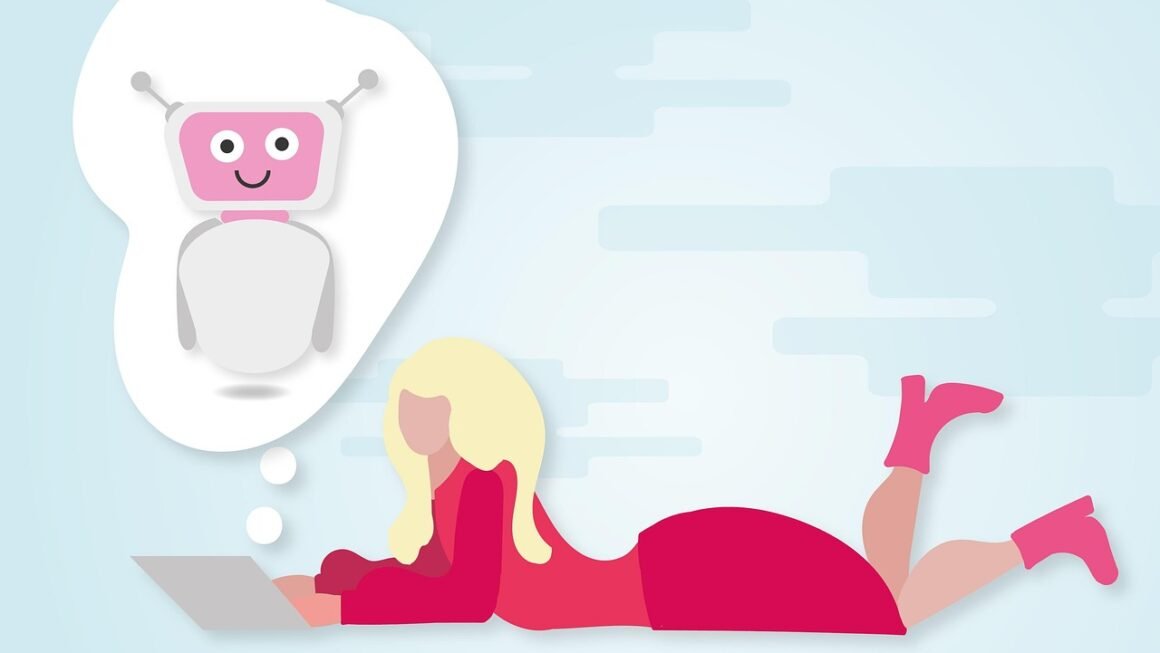Imagine a world where robots not only perform pre-programmed tasks but also learn, adapt, and make intelligent decisions on the fly. This is no longer a futuristic fantasy; it’s the rapidly evolving reality of AI in robotics. Integrating artificial intelligence with robotics is revolutionizing industries from manufacturing and healthcare to logistics and exploration, offering unprecedented levels of automation, efficiency, and problem-solving capabilities. This article delves into the fascinating synergy of AI and robotics, exploring its applications, benefits, and future potential.
What is AI in Robotics?
Defining AI and Robotics
Before diving deep, it’s important to define the core components. Artificial intelligence (AI) encompasses the development of computer systems capable of performing tasks that typically require human intelligence, such as learning, problem-solving, decision-making, and perception. Robotics, on the other hand, involves the design, construction, operation, and application of robots – automated machines that can perform tasks autonomously or semi-autonomously. AI in robotics merges these two fields, empowering robots with cognitive abilities.
The Synergy: AI + Robotics
The true power emerges when AI is integrated into robotic systems. AI algorithms enable robots to:
- Perceive their environment: Using sensors and computer vision to understand their surroundings.
- Plan and reason: Making decisions based on real-time data and pre-programmed goals.
- Learn and adapt: Improving their performance over time through machine learning.
- Interact: Communicating and collaborating with humans and other robots.
This fusion results in robots that are not merely pre-programmed machines but intelligent agents capable of tackling complex and dynamic tasks.
Key Technologies Enabling AI in Robotics
Several key technologies drive the advancement of AI in robotics:
- Machine Learning (ML): Algorithms that allow robots to learn from data without explicit programming. Examples include supervised learning for object recognition and reinforcement learning for autonomous navigation.
- Computer Vision: Enables robots to “see” and interpret images and videos, allowing them to identify objects, track movement, and understand their environment. Convolutional Neural Networks (CNNs) are commonly used for image recognition.
- Natural Language Processing (NLP): Allows robots to understand and respond to human language, facilitating communication and collaboration.
- Sensor Fusion: Combines data from multiple sensors (e.g., cameras, lidar, radar) to create a more complete and accurate understanding of the environment.
Applications of AI in Robotics
Manufacturing and Automation
AI-powered robots are transforming manufacturing processes, leading to increased efficiency, reduced costs, and improved quality. Consider these examples:
- Automated Assembly Lines: Robots equipped with computer vision can identify and assemble complex products with greater precision and speed than humans. Example: Automotive factories using robotic arms for welding, painting, and component assembly.
- Quality Control: AI algorithms can analyze images and sensor data to detect defects in products, ensuring high-quality standards. Example: Inspection of electronic components for microscopic flaws.
- Predictive Maintenance: Robots can monitor the condition of machinery and predict potential failures, allowing for proactive maintenance and minimizing downtime. Example: Industrial robots equipped with vibration sensors to detect early signs of wear and tear in motors.
Healthcare and Medicine
AI in robotics is revolutionizing healthcare, from surgical procedures to patient care. Here’s how:
- Surgical Robots: Robots equipped with AI can assist surgeons in performing complex procedures with greater precision and minimally invasive techniques. Example: The da Vinci Surgical System allows surgeons to perform minimally invasive surgery with enhanced precision and control.
- Rehabilitation Robots: AI-powered robots can assist patients with physical therapy and rehabilitation, helping them regain mobility and independence. Example: Exoskeletons that provide support and assistance to patients with mobility impairments.
- Automated Drug Dispensing: Robots can automate the process of dispensing medications in hospitals and pharmacies, reducing errors and improving efficiency.
Logistics and Warehousing
The logistics and warehousing industry is leveraging AI in robotics to optimize operations and streamline supply chains:
- Automated Guided Vehicles (AGVs): Robots that can autonomously navigate warehouses and factories, transporting materials and products. Example: Amazon using Kiva robots to move shelves of goods to human pickers.
- Sorting and Picking Robots: AI-powered robots can identify and sort products with high accuracy and speed, automating order fulfillment processes. Example: Robots that pick and pack orders in e-commerce warehouses.
- Delivery Drones: Autonomous drones can deliver packages to customers, reducing delivery times and costs. Example: Companies testing drone delivery services for food, medicine, and consumer goods.
Exploration and Hazardous Environments
Robots are essential for exploring environments that are too dangerous or inaccessible for humans:
- Space Exploration: Robots can explore planets, collect samples, and perform experiments in extreme environments. Example: The Mars rovers, such as Curiosity and Perseverance, are equipped with AI to navigate the Martian surface and analyze its composition.
- Disaster Response: Robots can be deployed to search for survivors, assess damage, and perform rescue operations in hazardous environments. Example: Robots used to search for survivors after earthquakes and building collapses.
- Underwater Exploration: Autonomous underwater vehicles (AUVs) can explore the ocean depths, map the seabed, and collect data on marine life. Example: Robots used to inspect underwater pipelines and offshore oil rigs.
Benefits of AI in Robotics
Increased Efficiency and Productivity
One of the primary benefits of AI in robotics is the ability to automate tasks and processes, leading to increased efficiency and productivity. Robots can work continuously without fatigue, performing repetitive tasks with greater speed and accuracy than humans.
- Reduced Labor Costs: Automating tasks with robots can reduce the need for human labor, leading to significant cost savings.
- Increased Throughput: Robots can perform tasks faster than humans, increasing the throughput of manufacturing processes and other operations.
- Improved Accuracy: Robots can perform tasks with greater precision and accuracy than humans, reducing errors and improving quality. A study by McKinsey & Company found that AI-powered robots can improve accuracy by up to 90% in certain tasks.
Enhanced Safety
Robots can perform tasks in hazardous environments, reducing the risk of injury or death to human workers. This is particularly important in industries such as mining, construction, and disaster response.
- Reduced Exposure to Hazards: Robots can perform tasks in environments with hazardous materials, extreme temperatures, or other dangers.
- Prevention of Accidents: Robots can be programmed to avoid collisions and other accidents, reducing the risk of injury.
- Improved Ergonomics: Robots can perform physically demanding tasks, reducing the risk of musculoskeletal disorders in human workers.
Improved Decision-Making
AI algorithms enable robots to make informed decisions based on real-time data and complex analysis, leading to improved outcomes. This is particularly valuable in dynamic and unpredictable environments.
- Data-Driven Decisions: Robots can analyze large amounts of data to identify patterns and make informed decisions.
- Adaptive Learning: Robots can learn from their experiences and adapt to changing conditions, improving their performance over time.
- Optimized Performance: Robots can optimize their performance based on real-time feedback, maximizing efficiency and minimizing errors.
Unlocking New Possibilities
AI in robotics opens up new possibilities for innovation and exploration, allowing us to tackle challenges that were previously impossible to address. From exploring distant planets to developing new medical treatments, AI-powered robots are driving progress in a wide range of fields.
Challenges and Considerations
Ethical Concerns
As AI in robotics becomes more prevalent, it’s crucial to address the ethical implications of this technology. This includes concerns about job displacement, bias in algorithms, and the potential for misuse.
- Job Displacement: The automation of tasks with robots can lead to job losses in certain industries.
- Algorithmic Bias: AI algorithms can be biased based on the data they are trained on, leading to unfair or discriminatory outcomes.
- Data Privacy: Robots collect and process large amounts of data, raising concerns about data privacy and security.
Technical Limitations
Despite the rapid advancements in AI and robotics, there are still technical limitations that need to be addressed. This includes challenges related to:
- Perception: Robots can struggle to accurately perceive and understand complex environments.
- Planning: Robots can have difficulty planning and executing complex tasks in dynamic environments.
- Adaptability: Robots can struggle to adapt to unexpected changes or novel situations.
Cost and Complexity
Implementing AI in robotics can be expensive and complex, requiring significant investment in hardware, software, and expertise. This can be a barrier for small and medium-sized enterprises (SMEs) that may not have the resources to adopt this technology.
- High Initial Investment: The cost of purchasing and implementing robots and AI systems can be significant.
- Integration Challenges: Integrating AI and robotics into existing systems can be complex and time-consuming.
- Skill Gap: There is a shortage of skilled professionals who can design, develop, and maintain AI-powered robots.
Future Trends in AI Robotics
Enhanced Collaboration
Future robots will be designed to work more closely with humans, collaborating on tasks and sharing information. This will require robots to be more intuitive, adaptable, and safe.
Edge Computing
Moving AI processing to the edge will enable robots to make decisions faster and more efficiently, reducing latency and improving responsiveness. This is particularly important for applications that require real-time control, such as autonomous driving and industrial automation.
Swarm Robotics
Swarm robotics involves the coordination of large numbers of simple robots to perform complex tasks. This approach can be more robust and efficient than using a single, complex robot.
Ethical AI
As AI becomes more integrated into our lives, there will be a greater focus on developing ethical AI systems that are fair, transparent, and accountable. This will require the development of new algorithms and frameworks that can address issues such as bias and discrimination.
Conclusion
AI in robotics represents a transformative technology with the potential to revolutionize industries and improve our lives in countless ways. From enhancing manufacturing processes and revolutionizing healthcare to exploring uncharted territories and providing essential services, the possibilities are truly limitless. While challenges and ethical considerations remain, the continued innovation and development in this field promise a future where intelligent robots work alongside humans, driving progress and creating a more efficient, safe, and prosperous world. As AI algorithms continue to evolve and robots become more sophisticated, we can expect to see even more groundbreaking applications emerge in the years to come, reshaping our economy and society in profound ways. Embracing this technology responsibly and ethically is key to unlocking its full potential and ensuring a future where AI and robotics benefit all of humanity.



